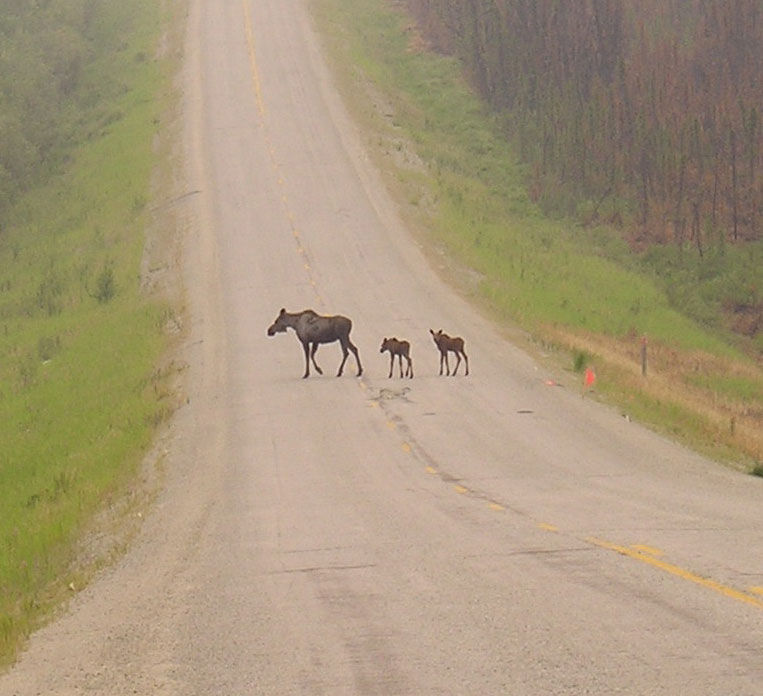Tok (pronounced “toke”) originated as an Alaska Road Commission camp for the construction of the Alaska Highway in the 1940’s during WWII.
Located on the Alaska Highway, just under 100 miles from the border with Yukon Territory, Canada, it is the first town you will come to when driving into Alaska and the last town you will drive through when you leave, as the Alcan is the only way in or out of Alaska by road.
It’s a natural stopping point for travelers coming into or leaving the state. From Tok you can drive west 3.5 hrs. to Fairbanks, or South, about 6.5 hours to Anchorage. Just east of Tok is the Taylor Highway. On it you can travel north to the gold country of Chicken, or Eagle and the Yukon-Charley Rivers National Preserve, Boundary and Dawson City, Yukon.
With a population of about 1,400 people it offers the traveler many of the services one would expect to find in a small town and is the trade and service center for several small communities and villages along the road system in the Eastern Interior.
From the Alaska Range Motel, you can walk the 1.3 miles into Tok on the State maintained sidewalk to visit the Tok Mainstreet Visitors Center. With racks of brochures, and wildlife displays, the center has knowledgeable and helpful hosts to answer your many questions.
Nearby is the Alaska Public Lands Information Center where helpful staff can provide additional information on the states parks and outdoor activities.
The lifestyle in Tok is very much a seasonally driven one and many residents lead a semi-subsistence lifestyle that revolves around harvesting food and materials. Depending on what month it is, locals might be out harvesting game, fish, berries, firewood or house logs. Recreational riding of ATV’s and snow machines (snowmobiles) is also popular as well as dog mushing in the late winter/early spring.
Known for being a very rural part of Alaska with a lifestyle befitting a town that is 100 miles away from the next closest town, and a several hour drive to the closest city, Tok is literally on the edge of the wilderness. Moose are often seen crossing the highway and anyone on the road system is advised to keep a constant look out for them for safety reasons and to catch an up close look at the largest of the deer family. Bear, wolves, lynx and caribou are also abundant and often seen crossing the road, while Dall Sheep can be seen on the mountainsides (Look for groups of little white dots, binoculars help). There are numerous pull-offs and scenic overlooks to view the countryside and spot wildlife. There are many hiking trails that are known to locals, however, traveling any distance on these is not recommended unless accompanied by a local guide who knows the country.
Tok is an outdoors lover’s paradise. In all directions wild lands teeming with birds, mammals and fish beckon. The sheer size of the land and the distance between towns is amazing. It is also airplane country and to see how big the country really is you can book a flight with the local flight services and get an up close view of Dall Sheep along the steep and rugged mountains of the Alaska Range as well as many other attractions. There are both small airplane and helicopter flights and they are highly recommended to anyone venturing into the Interior of Alaska as a way to see how vast this wilderness really is.
On the road system, just minutes from Tok in any direction are State Forests. Activities here include:
- Wilderness camping
- Fishing and hunting
- Hiking
- ATV riding
- Bird watching
- Photography
- Overland excursions
- Float trips
- Foraging for edible plants
- Flight seeing
- Gold panning
Just east of Tok is the Tetlin National Wildlife Refuge. It borders the Wranagel- St. Elias National Park to the south and the Kluane National Park in Canada to form the world’s largest contiguous wildlife preserve. Favorite summer activities for Refuge visitors are bird and wildlife watching, interpretive programs, camping, sport fishing, and canoeing.
Take your time while in Tok, it’s a large area and the more time you spend here the better. Enjoy the uniqueness of rural Alaska and be prepared for things to be….different.

